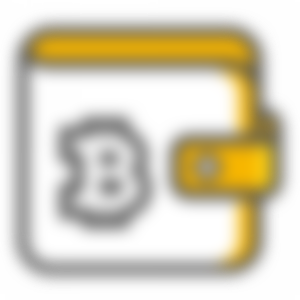Day trading cryptocurrency has boomed in recent months. High volatility and trading volume in cryptocurrencies suit day trading very well. Here we provide some tips for day trading crypto, including information on strategy, software and trading bots – as well as specific things new traders need to know, such as taxes or rules in certain markets.We also list the top crypto brokers in 2020 and show how to compare brokers to find the best one for you.

How To Trade Cryptocurrency
Scared of missing out? Here is a quick plan to get you trading cryptocurrency quickly;
Decide if you want to own the cryptocurrency, or simply have a hunch that it’s value will go up or down.
Fund your account
Buy the Cryptocurrency you want, or open a trade on it’s price.
Congratulations, you are now a cryptocurrency trader! Remember, you can run through the purchase or sale of cryptocurrencies on a broker demo account. Unfortunately, you cannot practise on an exchange.
Trading crypto generally revolves around speculating on it’s price, rather than owning any of the actual coins. For this reason, brokers offering forex and CFDs are generally an easier introduction for beginners, than the alternative of buying real currency via an exchange.

How to Compare Brokers
Which cryptocurrency platform you opt to do your trading on is one of the most important decisions you’ll make. The exchange will act as a digital wallet for your cryptocurrencies, so don’t dive in without considering the factors below first.
Some brokers specialise in crypto trades, others less so. Others offer specific products. IQ Option for example, deliver traditional crypto trading via Forex or CFDs – but also offer cryptocurrency multipliers. These offer increased leverage and therefore risk and reward. Innovative products like these might be the difference when opening an account cryptocurrency day trading.
Apps & Software
Day traders need to be constantly tuned in, as reacting just a few seconds late to big news events could make the difference between profit and loss. That’s why many brokers now offer user friendly cryptocurrency mobile apps, ensuring you can stay up to date whether you’re on the train, or making your sixth coffee of the day.
The cryptocurrency trading platform you sign up for will be where you spend a considerable amount of time each day, so look for one that suits your trading style and needs. Exchanges like Coinbase offer in-depth platforms, such as their Global Digital Asset Exchange (GDAX). It’s always worth setting up a demo account first to make sure the exchange has the technical tools and resources you need.
Security
Always check reviews to make sure the cryptocurrency exchange is secure. If your account is hacked and your digital currency transferred out, they’ll be gone forever. So whilst secure and complex credentials are half the battle, the other half will be fought by the trading software.
Fees
Each exchange offers different commission rates and fee structures. As a day trader making a high volume of trades, just a marginal difference in rates can seriously cut into profits. There are three main fees to compare:
Exchange fees – This is how much you’ll be charged to use their cryptocurrency software. What currency and coins you’re trading can influence the rate.
Trade fees – This is how much you’ll be charged to trade between currencies on their exchange. A marker fee is the cost of making an offer to sell. A taker fee is the cost of taking an offer from somebody.
Deposit & Withdrawal fees – This is how much you’ll be charged when you want to deposit and withdraw money from the exchange. You’ll often find it’s cheaper to deposit your funds. Also keep in mind some exchanges don’t allow credit cards. Using debit/credit will usually come with a 3.99% charge, a bank account will usually incur a 1.5% charge.
Final Word On Brokers
This isn’t a decision to take lightly. Do the maths, read reviews and trial the exchange and software first. Coinbase is widely regarded as one of the most trusted exchanges, but trading cryptocurrency on Bittrex is also a sensible choice. CEX.IO, Coinmama, Kraken and Bitstamp are other popular options.
Cryptocurrency Trading For Beginners
Before you choose a broker and trial different platforms, there are a few straightforward things to get your head around first. Understanding and accepting these three things will give you the best chance of succeeding when you step into the crypto trading arena.
Find out what’s growing – Bitcoin, Ethereum and Litecoin top the list for tradability and ease of use. However, there are also Zcash, Das, Ripple, Monero and several more to keep an eye on. Do your homework and find out what’s on the up and focus your attention there.
Embrace volatility – Cryptocurrencies are famously volatile. The price of Bitcoin, for example, went from $3,000 down to $2,000 and then leapt up to nearly $5,000, all within three months in 2017. Whilst this means risk is high, it also means the potential for profit is great too. It’s always sensible to check the volatility of the exchange you decide to go with.
Understand blockchain – You don’t need to understand the technical complexities, but a basic understanding will help you respond to news and announcements that may help you predict future price movements. It is essentially a continuously growing list of secure records (blocks). Cryptography secures the interactions and then stores them publicly. They serve as a public ledger, cutting out intermediaries such as banks.
Wallets
If you want to own the actual cryptocurrency, rather than speculate on the price, you need to store it.
There are a huge range of wallet providers, but there are also risks using lesser known wallet providers or exchanges. We recommend a service called Bitmex.
Strategy
Once you’ve decided on a broker, got familiar with your platform and funded your account, it’s time to start trading. You’ll need to utilise an effective strategy in line with an efficient money management system to make a profit. Below is an example of a straightforward cryptocurrency strategy.
Swing Trading
This straightforward strategy simply requires vigilance. The idea is you keep a close eye out for a correction in a trend and then catch the ‘swing’ out of the correction and back into the trend. A correction is simply when candles or price bars overlap. You’ll find trending prices move quickly, but corrections, on the other hand, will not.
Let’s say on your cryptocurrency chart at 250-minute candles, you see 25 candles where the price stays within a 100 point range. If the price contracted to a daily move of just 20 points, you’d be seriously interested and alert. You should see lots of overlap. This tells you there is a substantial chance the price is going to continue into the trend.
You should then sell when the first candle moved below the contracting range of the previous several candles, and you could place a stop at the most recent minor swing high. It’s simple, straightforward and effective.
Tips
Even with the right broker, software, capital and strategy, there are a number of general tips that can help increase your profit margin and minimise losses. Below are some useful cryptocurrency tips to bear in mind.
Utilise News
Short-term cryptocurrencies are extremely sensitive to relevant news. When news such as government regulations or the hacking of a cryptocurrency exchange comes through, prices tend to plummet.
On the flip side, if a big company announces they’ll be incorporating the use of a currency into their business, prices can climb quickly. If you’re aware of any news and can react rapidly, you’ll have an edge over the rest of the market.
Technical Analysis
Analyse historical price charts to identify telling patterns. History has a habit of repeating itself, so if you can hone in on a pattern you may be able to predict future price movements, giving you the edge you need to turn an intraday profit. For more details on identifying and using patterns, see here.
Study Metrics
This is one of the most important cryptocurrency tips. By looking at the number of wallets vs the number of active wallets and the current trading volume, you can attempt to give a specific currency a current value. You can then make informed decisions based on today’s market price. The more accurate your predictions, the greater your chances for profit.
Trade On Margin
If you anticipate a particular price shift, trading on margin will enable you to borrow money to increase your potential profit if your prediction materialises. Exchanges have different margin requirements and offer varying rates, so doing your homework first is advisable. Bitfinex and Huobi are two of the more popular margin platforms.
Remember, Trading or speculating using margin increases the size of potential losses, as well as the potential profit.
Rules & Taxes
The digital market is relatively new, so countries and governments are scrambling to bring in cryptocurrency taxes and rules to regulate these new currencies. If you’re not aware of these before you start trading, you may find yourself in a spot of expensive bother further down the line.
Rules
Many governments are unsure of what to class cryptocurrencies as, currency or property. The U.S in 2014 introduced cryptocurrency trading rules that mean digital currencies will fall under the umbrella of property. Traders will then be classed as investors and will have to conform to complex reporting requirements. Details of which can be found by heading to the IRS notice 2014-21.
Taxes
On top of the possibility of complicated reporting procedures, new regulations can also impact your tax obligations. The U.S, the ‘property’ ruling means your earnings will now be deemed as capital gains tax (15%), instead of normal income tax (up to 25%). Each countries cryptocurrency tax requirements are different, and many will change as they adapt to the evolving market. Before you start trading, do your homework and find out what type of tax you’ll pay and how much.

Bots
If you’ve already got a strategy that works, then a cryptocurrency trading robot may be worth considering. Once you’ve programmed your strategy, the bot will get to work, automatically executing trades when the pre-determined criteria are met. There are two benefits to this.
Firstly, it will save you serious time. You won’t have to stare at charts all day, looking for opportunities. Trade execution speeds should also be enhanced as no manual inputting will be needed.
Secondly, automated software allows you to trade across multiple currencies and assets at a time. That means greater potential profit and all without you having to do any heavy lifting.
Risks
Having said that, bots aren’t all plain sailing. If you want to avoid losing your profits to computer crashes and unexpected market events then you will still need to monitor your bot to an extent.
They can also be expensive. Whilst there are many options like BTC Robot that offer free 60 day trials, you will usually be charged a monthly subscription fee that will eat into your profit. They can also be expensive to set up if you have to pay someone to programme your bot. On top of that, you’ll need to pay to have your bot updated as the market changes.
So, whilst bots can help increase your end of day cryptocurrency profit, there are no free rides in life and you need to be aware of the risks. Perhaps then, they are the best asset when you already have an established and effective strategy, that can simply be automated.
Education
The most useful cryptocurrency trading tutorial you can go on is the one you can give yourself, with a demo account. Firstly, you will you get the opportunity to trial your potential brokerage and platform before you buy.
Secondly, they are the perfect place to correct mistakes and develop your craft. You’ll usually be trading with simulated money, so mistakes won’t cost you your hard earned capital. Once you’ve trialled your strategy and ironed out any creases, then start executing trades with real money.
Online you can also find a range of cryptocurrency intraday trading courses, plus an array of books and ebooks. The more information you absorb the better prepared you’ll be, and the greater chance you’ll have of maintaining an edge over the market.
Key Points
Think of this as your guide to day trading cryptocurrency and you’ll avoid most of the hurdles many traders fall down at. When choosing your broker and platform, consider ease of use, security and their fee structure. There are a number of strategies you can use for trading cryptocurrency in 2017. Whichever one you opt for, make sure technical analysis and the news play important roles. Finally, keep aware of regional differences in rules and taxes, you don’t want to lose profit to unforeseen regulations.




